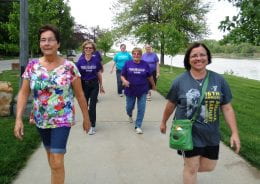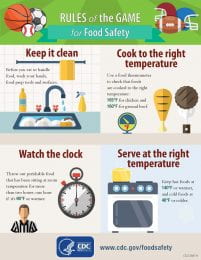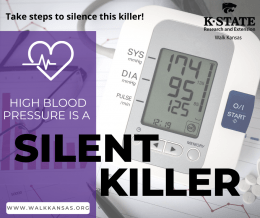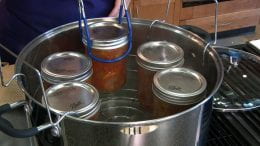 We all can do so much better with physical activity. New data from the Centers for Disease Control and Prevention (CDC) says that more than one in five adults are inactive in all but four U.S. states.
We all can do so much better with physical activity. New data from the Centers for Disease Control and Prevention (CDC) says that more than one in five adults are inactive in all but four U.S. states.
Physical inactivity is defined as not participating in any kind of physical activity outside of work activity. This includes walking, running, gardening and more. By U.S. region, the South had the highest prevalence of physical inactivity followed by the Midwest, Northeast and West. In Kansas, the prevalence is between 20%-<25%.
The underlying factors contributing to this problem include lack of safe spaces in communities such as parks, high-speed traffic on unsafe streets with no sidewalks, lack of time, lack of social supports, racial and ethnic disparities.
Steps to take to reverse this trend are comprehensive from the state level to individuals. With efforts to get 27 million Americans more physically active, there could be a reduction in at least 20 chronic diseases.
Overall prevalence of physical inactivity in the U.S. is 25.3%. Some activity is better than none!
Learn more at www.cdc.gov/physicalactivity/data/inactivity-prevalence-maps/index.html.
 Football fans are excited to see who will be in this year’s Big Game. Start planning now for your gameday party and remember these food safety tips for a touchdown!
Football fans are excited to see who will be in this year’s Big Game. Start planning now for your gameday party and remember these food safety tips for a touchdown! Olympic athletes can provide inspiration to get up an move! Here’s how you can become a winner like an Olympian.
Olympic athletes can provide inspiration to get up an move! Here’s how you can become a winner like an Olympian. American Heart Month is during the month of February to remind everyone to focus on their heart and cardiovascular health. For 2022, the focus is on hypertension, or high blood pressure. This is the leading cause of heart disease and stroke.
American Heart Month is during the month of February to remind everyone to focus on their heart and cardiovascular health. For 2022, the focus is on hypertension, or high blood pressure. This is the leading cause of heart disease and stroke. After the Kansas State Fair, the rules for all projects are reviewed and updated. For Food Preservation, please note the following important changes:
After the Kansas State Fair, the rules for all projects are reviewed and updated. For Food Preservation, please note the following important changes: